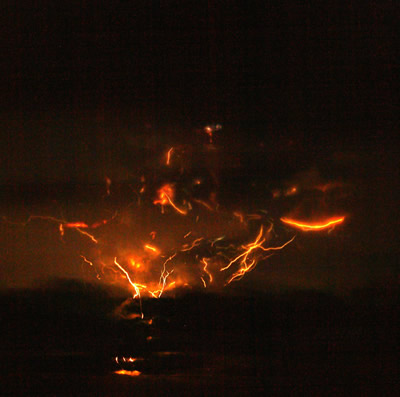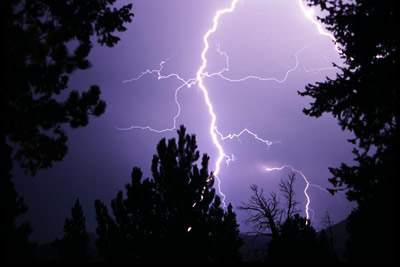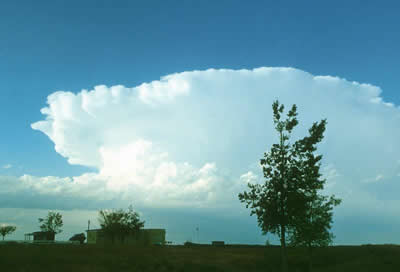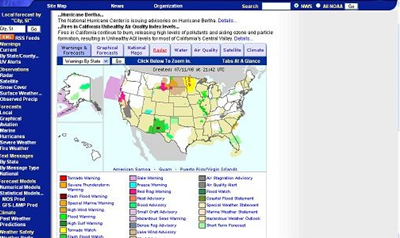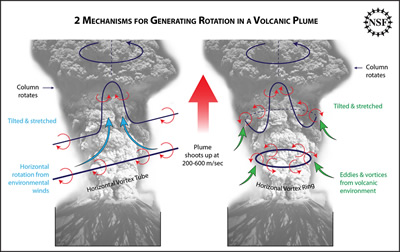Click on image for full size
Image Courtesy of Bretwood Higman
Scientists Learn About Lightning Inside a Volcanic Plume
News story originally written on April 7, 2009
This spring, scientists began recording data on lightning in a volcanic eruption--right from the start of the eruption. They used an instrument called a Lightning Mapping Array to study electrical activity during a volcanic eruption. The arrays have been deployed at volcanoes only twice before. Thousands of individual segments of a single lightning stroke can be mapped with the Lightning Mapping Array; later on scientists can analyze the data to learn how lightning is started and how it spreads through a thunderstorm, or in a volcanic plume.
When Alaska's Redoubt Volcano started rumbling in January, a team of researchers hurried to set up a series of the arrays along the east side of Cook Inlet, across from the volcano. When the volcano erupted on March 22 and 23, 2009, the arrays collected dramatic information about the electricity created within volcanic plumes, and the lightning produced in these plumes.
"For the first time, we had the Lightning Mapping Array on site before the initial eruption," said scientist Sonja Behnke of New Mexico Tech.
"The data will allow us to better understand the electrical charge structure inside a volcanic plume," said scientist Ron Thomas of New Mexico Tech. "That should help us learn how the plume is becoming electrified, and how it evolves over time."
Bradley Smull, program director in the National Science Foundation (NSF)'s Division of Atmospheric Sciences, said the information will give scientists insights into the electrical mechanisms in both plumes above active volcanoes, and in lightning spawned in thunderstorms. Portable Lightning Mapping Arrays are being used by meteorologists to issue weather warnings.
Redoubt was "a perfect laboratory," said physicist Paul Krehbiel of New Mexico Tech. "It erupted on schedule--and gave us two months' notice." Because of this advance notice, scientists were able to set up the sensors prior to the eruptions, and because of this scientists are going to be able to learn a lot about electrical charges and lightning in volcanic plumes.


